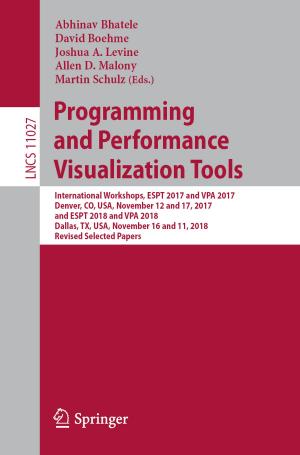Breeding in a World of Scarcity
Proceedings of the 2015 Meeting of the Section “Forage Crops and Amenity Grasses” of Eucarpia
Nonfiction, Science & Nature, Science, Biological Sciences, Botany| Author: | ISBN: | 9783319289328 | |
| Publisher: | Springer International Publishing | Publication: | June 13, 2016 |
| Imprint: | Springer | Language: | English |
| Author: | |
| ISBN: | 9783319289328 |
| Publisher: | Springer International Publishing |
| Publication: | June 13, 2016 |
| Imprint: | Springer |
| Language: | English |
This book includes papers presented at the 2015 meeting of the Fodder Crops and Amenity Grasses Section of Eucarpia. The theme of the meeting “Breeding in a world of scarcity” was elaborated in four sessions: (1) scarcity of natural resources, (2) scarcity of breeders, (3) scarcity of land and (4) scarcity of focus. Parts I to IV of this book correspond to these four sessions. Session 1 refers to the consequences of climate change, reduced access to natural resources and declining freedom in using them. Plant breeding may help by developing varieties with a more efficient use of water and nutrients and a better tolerance to biotic and abiotic stresses. Session 2 refers to the shrinking number of field breeders. There is a need for a mutual empathy between field- and lab-oriented breeding activities, integrating new methods of phenotyping and genotyping. Session 3 underscores the optimal use of agricultural land. Forage needs to be intensively produced in a sustainable way, meeting the energy, protein and health requirements of livestock. Well-adapted varieties, species and mixtures of grasses and legumes are needed. Session 4 refers to the fading of focus in primary production triggered by a range of societal demands. There are few farmers left and they are asked to meet many consumer demands. Both large-scale, multi-purpose species and varieties and specialized niche crops are required. Part V summarizes the conclusions of two open debates, two working group meetings and two workshops held during the conference. The debates were devoted to the future of grass and fodder crop breeding, and to feed quality breeding and testing. The conference hosted meetings of the working groups “Multisite rust evaluation” and “Festulolium”. Workshops focused on “genomic selection and association mapping” and on “phenotyping” with applications in practical breeding research. Part V contains also short sketches of breeding ideas presented as short communications.
This book includes papers presented at the 2015 meeting of the Fodder Crops and Amenity Grasses Section of Eucarpia. The theme of the meeting “Breeding in a world of scarcity” was elaborated in four sessions: (1) scarcity of natural resources, (2) scarcity of breeders, (3) scarcity of land and (4) scarcity of focus. Parts I to IV of this book correspond to these four sessions. Session 1 refers to the consequences of climate change, reduced access to natural resources and declining freedom in using them. Plant breeding may help by developing varieties with a more efficient use of water and nutrients and a better tolerance to biotic and abiotic stresses. Session 2 refers to the shrinking number of field breeders. There is a need for a mutual empathy between field- and lab-oriented breeding activities, integrating new methods of phenotyping and genotyping. Session 3 underscores the optimal use of agricultural land. Forage needs to be intensively produced in a sustainable way, meeting the energy, protein and health requirements of livestock. Well-adapted varieties, species and mixtures of grasses and legumes are needed. Session 4 refers to the fading of focus in primary production triggered by a range of societal demands. There are few farmers left and they are asked to meet many consumer demands. Both large-scale, multi-purpose species and varieties and specialized niche crops are required. Part V summarizes the conclusions of two open debates, two working group meetings and two workshops held during the conference. The debates were devoted to the future of grass and fodder crop breeding, and to feed quality breeding and testing. The conference hosted meetings of the working groups “Multisite rust evaluation” and “Festulolium”. Workshops focused on “genomic selection and association mapping” and on “phenotyping” with applications in practical breeding research. Part V contains also short sketches of breeding ideas presented as short communications.















